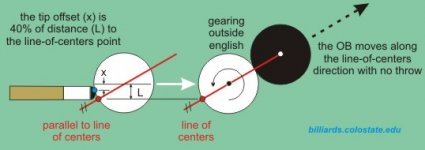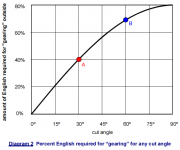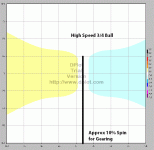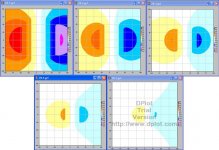I would appreciate Dr. Dave's insights into my contemplations below, but thought I'd throw it out there for anyone who has an interest.
Dr. Dave has proposed a 40% rule / guide, whereby if we offset the tip by 40% of the distance from the center object ball to contact point, we create an amount of outside english which cancels out the Contact Induced Throw (CIT).
I'll include the diagram below and add further posts to give more information.
Dr. Dave has proposed a 40% rule / guide, whereby if we offset the tip by 40% of the distance from the center object ball to contact point, we create an amount of outside english which cancels out the Contact Induced Throw (CIT).
I'll include the diagram below and add further posts to give more information.




